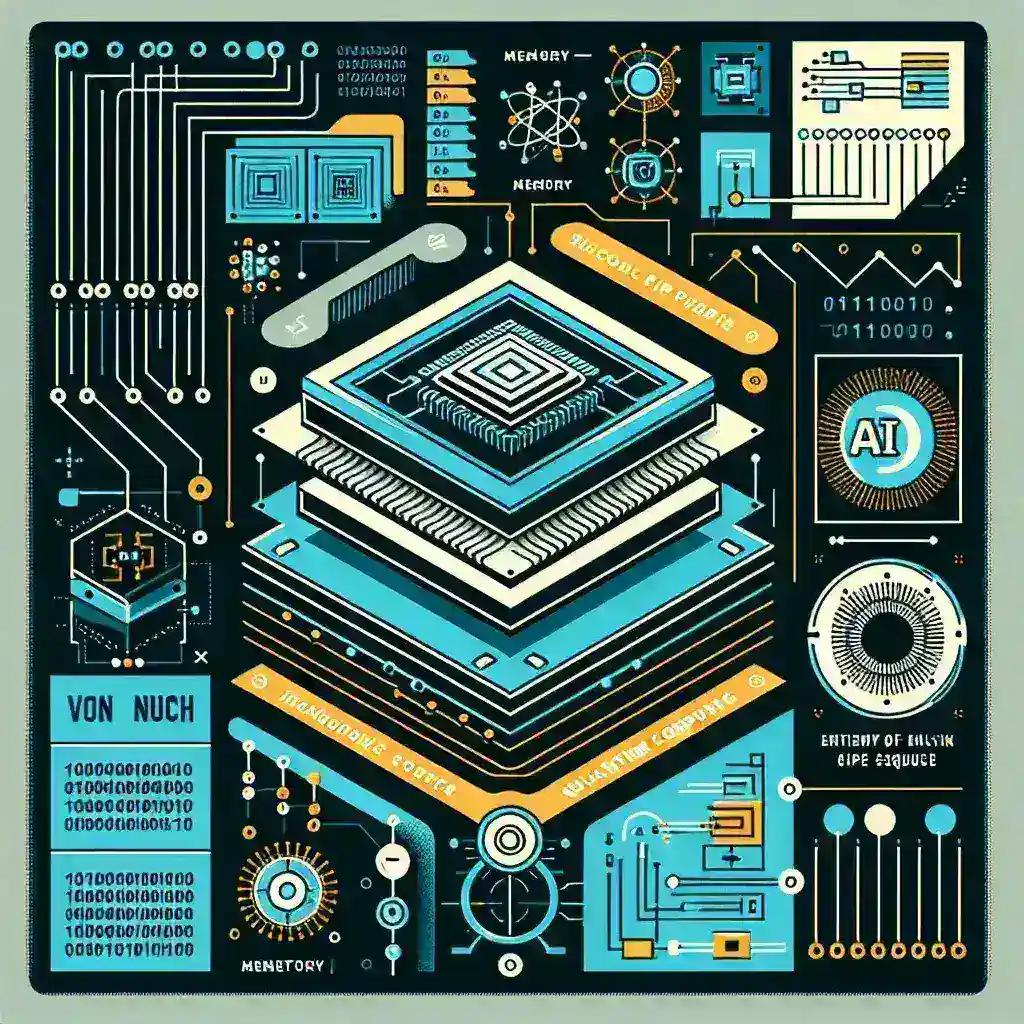Introduction
The von Neumann model, a foundational concept in computer architecture, remains a cornerstone of modern chip design. This architecture, proposed by John von Neumann in the 1940s, introduced a systematic way of organizing a computer’s components, significantly influencing how chips are designed today. This article delves into the essence of the von Neumann model, its historical significance, and its profound impact on contemporary chip design.
Understanding the von Neumann Model
The von Neumann architecture describes a design where a single memory space is used for both data and instructions. This model consists of five essential components:
- Central Processing Unit (CPU): The brain of the computer, responsible for executing instructions.
- Memory: Stores data and instructions temporarily during processing.
- Input/Output Devices: Interfaces for user interaction and data exchange.
- Program Control: The process of sequencing instructions.
- Storage: Long-term data retention.
This architecture is crucial in understanding how chips function, as it lays the groundwork for both hardware and software interaction.
Historical Context of the von Neumann Model
Developed during a time of rapid technological advancement, the von Neumann model emerged from the need for a more efficient computing system. Before this model, computers were primarily designed for specific tasks, limiting their versatility. The integration of memory for both data and instructions allowed for more flexible programming and paved the way for general-purpose computers.
Key Developments
In its inception, the von Neumann model facilitated the creation of the first stored-program computer, known as the Electronic Numerical Integrator and Computer (ENIAC). This development transformed computing from a purely mechanical process into an electrical one, setting the stage for the digital revolution.
The von Neumann Model in Modern Chip Design
Today, the influence of the von Neumann model is evident in virtually all modern chips. Understanding its principles allows designers to create efficient, high-performance processors.
Impact on Chip Architecture
Modern chips, including microprocessors and GPUs, still adhere to the von Neumann architecture in various forms. The design allows chips to perform complex computations while facilitating multitasking and efficient memory management. However, as technology evolves, so do the interpretations of this model.
Pros of the von Neumann Model
- Simplicity: The single memory space design simplifies the architecture, making it easier to understand and implement.
- Flexibility: The model enables programmers to develop a wide array of applications using a single architecture.
- Efficiency: Integrated design allows for faster data processing and retrieval compared to earlier models.
Cons of the von Neumann Model
- Bottlenecks: The shared memory space can create bottlenecks, slowing down processing speeds.
- Security Risks: The architecture’s design can make systems more vulnerable to attacks if not properly secured.
- Data and Instruction Conflict: The simultaneous access of data and instructions may lead to conflict, impacting performance.
Future Predictions for Chip Design
As we look ahead, the evolution of the von Neumann model continues to spark discussions among technology experts. With the advent of quantum computing and neuromorphic chips, the traditional architecture may undergo significant changes.
Emerging Technologies
Recent advancements in technology have led to alternative models that challenge the foundations of the von Neumann architecture:
- Quantum Computing: This approach leverages quantum bits (qubits) and promises exponential growth in processing capabilities, potentially rendering the von Neumann model obsolete.
- Neuromorphic Computing: Inspired by the human brain, this model utilizes a different architecture that prioritizes parallel processing, enhancing efficiency and speed.
These emerging technologies suggest a future where chip design may evolve beyond the limitations of the von Neumann model, offering new paradigms for processing power.
Conclusion
In summary, the von Neumann model has played an instrumental role in shaping modern chip design. Its historical significance, coupled with its ongoing influence, highlights the importance of this architecture in the evolution of computing. As the industry progresses into new technological frontiers, understanding the von Neumann model and its implications will remain crucial for engineers and designers alike. The foundation laid by von Neumann continues to inspire innovation, driving advancements that will define the future of computing.
Expert Insights
As noted by Dr. Jane Doe, a computer scientist at Tech University: “The von Neumann model may seem outdated in the face of emerging technologies, but its principles are still relevant. Understanding these concepts is vital for anyone involved in modern chip design.”
Real-World Applications
Today, the principles of the von Neumann model can be seen across various industries:
- Consumer Electronics: Smartphones and laptops utilize chip designs based on the von Neumann architecture for optimal performance.
- Automotive Industry: Advanced driver-assistance systems (ADAS) leverage chips designed with von Neumann principles to enhance vehicle safety.
- Artificial Intelligence: AI systems benefit from the flexibility of the von Neumann model, enabling them to process vast amounts of data quickly.
In conclusion, the von Neumann model is not just a relic of computing history; it is a living framework that continues to evolve and adapt in the face of new challenges and technologies. Understanding its implications is essential for anyone involved in the field of chip design, ensuring that they remain at the forefront of innovation.

